This post may contain affiliate links. I only recommend products or services that I personally use or trust, promise!

Fish cake soup (odeng guk) is one of the most classic & traditional Korean street foods. It is often paired with spicy rice cakes (tteokbokki), and the delicious hot broth is especially comforting during the fall and winter months!
You will see TONS of street vendors with odeng in their carts in Korea. It is a Korean staple for street food- easy to eat since it’s on a skewer and the broth is served in cups for you to drink and keep warm during all and winter.
The fish cakes are put on a skewer then left to simmer & steam in a delicious anchovy broth that is seasoned with soup soy sauce, sea salt, and rice wine.
What are fish cakes?
Fish cakes are made of ground up fish, seasonings, vegetables, flour to hold it all together, and some type of starch to give it a nice bouncy texture.
My mom once told me that she saw the process of making fish cakes in a factory, and was horrified to see how they were made. According to her, the entire fish is ground up- including the bones. I am not sure if they were gutted first, but I have to think that they are so food safety purposes.
Fish cakes are generally perceived as unhealthy in Korea, but it is still so popular. I was thinking about making the fish cake from scratch for this recipe, but my mom told me not to bother- no one in Korea makes it from scratch at home. Perhaps I will post a separate recipe for it in the future in case any readers do not have access to fish cakes.
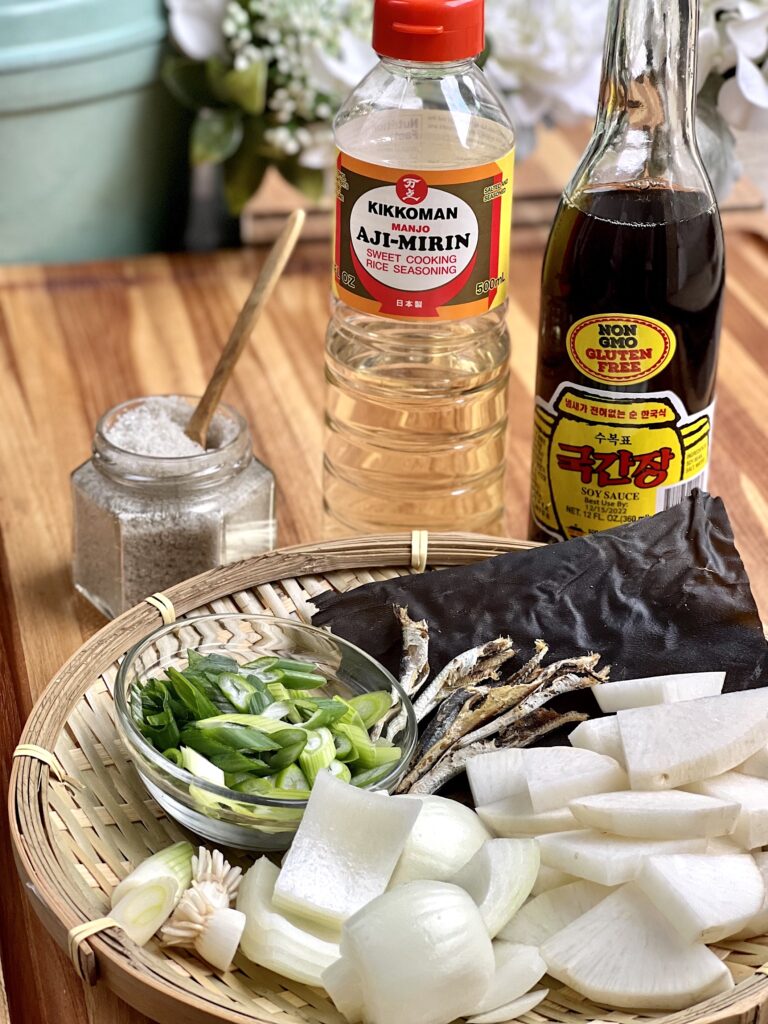
Ingredients:
- Fish cakes- you can use any kind of fishcakes for this. At the street carts, you will typically see the sheet type that is thick and skewered in a ribbon pattern. Sometimes you can find them skewered and ready to make in the freezer or refrigerator section. Or you can buy the sheets or other shapes and skewer them yourself.
- Anchovy broth– the broth is a anchovy base that is made with dried anchovies, dried kelp, Korean radish, and onions.
- Soup seasoning– season the anchovy broth with soup soy sauce, rice wine, and sea salt. If you don’t have soup soy sauce, you can use regular soy sauce instead. Soup soy sauce is lighter in color and stronger in flavor, so you will need to add a little more regular soy sauce and expect the color to be a little darker.
- Dipping sauce- in my opinion the dipping sauce is just as important as the broth. I make a very standard sauce using soy sauce, sesame oil, gochugaru, garlic, sugar, green onion, jalapeño, sesame seeds, and sometimes rice vinegar.
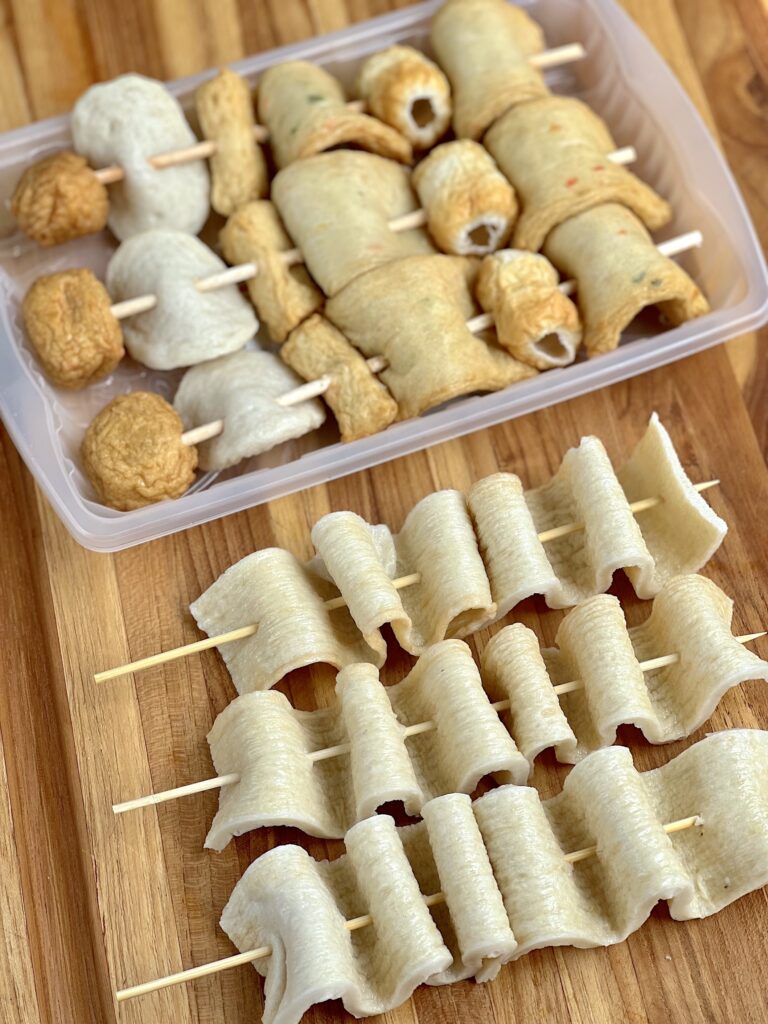
Tools & ingredients, and where to get them:
Pre-packaged fish cake skewers: look in the frozen or refrigerated section at your local asian supermarket for fish cakes that are already skewered and ready to cook. These will usually come with a broth seasoning packet as well, but it’s better to make it from scratch.
Fish cakes: if you can’t find the pre-packaged skewered fish cakes, you can always buy them and skewer them yourself. They can be found in the freezer and refrigerated sections at the asian supermarket, and there is also usually a freezer section dedicated to individual pieces of fish cakes that come in various shapes and sizes that you can purchase by weight.
Skewers: you don’t actually need to skewer the fish cakes if you don’t want to- this is just how it is served by the street vendors. I used some really thin bamboo skewers for the fish cake sheets, but I recommend using something a little thicker and sturdier like these from Amazon. You can also use wooden chopsticks if you have them.
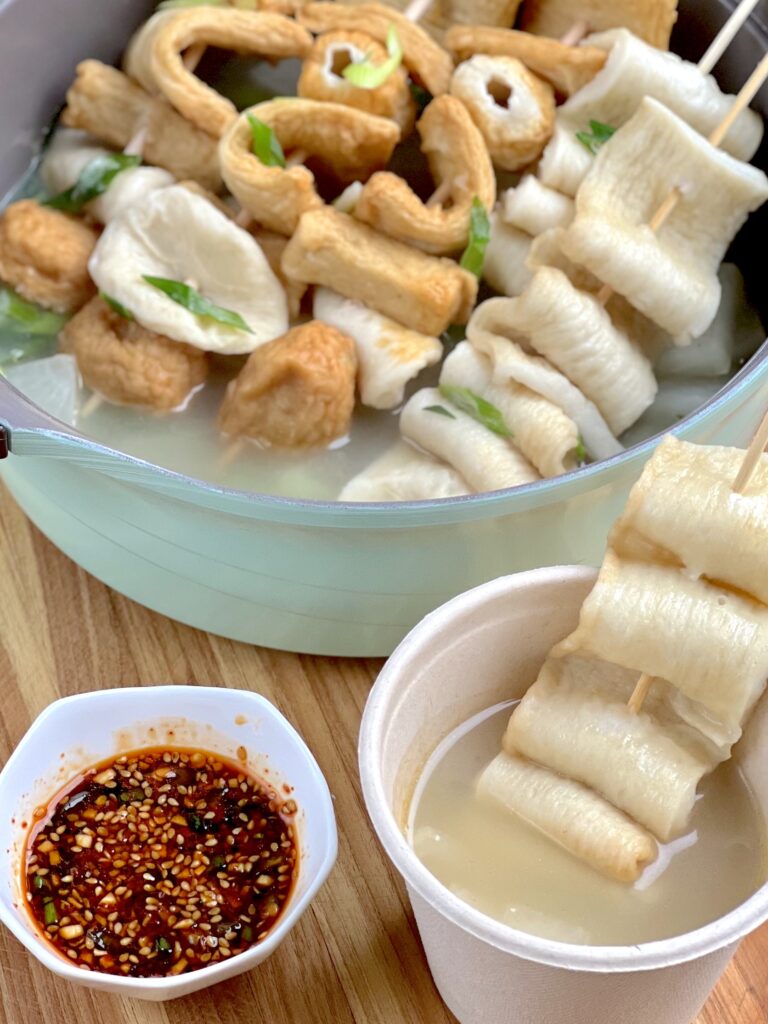
Odeng or Eomuk?
I just want to quickly address the names for fish cakes in Korean. I grew up calling it “odeng” which is a load word from the Japanese name for fish cakes, “oden.”
Korea’s efforts to purify the Korean language from Japanese words (as a result of the occupation) has been a movement for quite some time now, and the “purified” word for fish cakes is “eomuk.” I actually did not even know the purified word for fish cakes until very recently. I use both terms now, but tend to say “odeng” more just out of habit.
I also wanted to note that I actually grew up calling this odeng “tang.” I’m not sure why but the key search words for this is odeng or eomuk “guk” so that’s what I titled it.
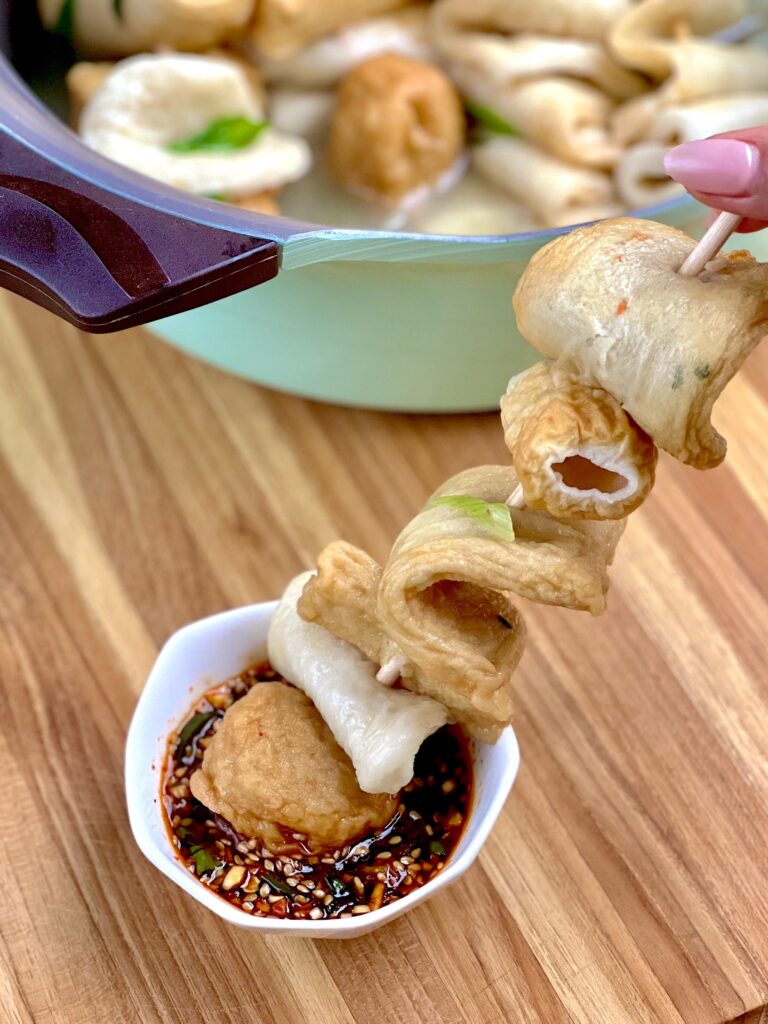
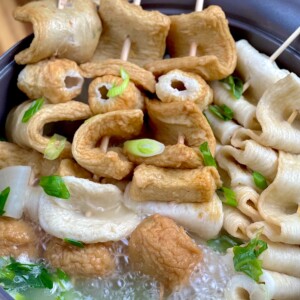
Korean Fish Cake Soup- Odeng/Eomuk Guk
Ingredients
- 12-15 oz fish cakes
- 2 green onions
Broth:
- 6 cups water
- 1 oz dried anchovies, heads and innards removed
- 4 oz Korean radish slices
- 4 oz diced onion
- 1 5×5 sheet dried kelp
- 1/2 tsp sea salt
- 2 tsp soup soy sauce
- 2 tsp rice wine (mirim/mirin)
Dipping sauce:
- 2 tbsp soy sauce
- 2 tsp sugar
- 1 tsp gochugaru, (Korean pepper flakes)
- 1 tsp minced garlic
- 1 tsp chopped green onion
- 1 tsp chopped jalapeno
- 1 tsp sesame oil
- 1/2 tsp sesame seeds
Instructions
Prep:
- Mix the dipping sauce ingredients together and set aside.
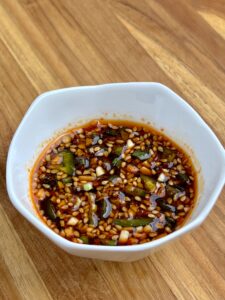
- Prepare the broth ingredients: dice the onion, cut the radish into thin bite sized slices, and remove the head & innards from the anchovies.
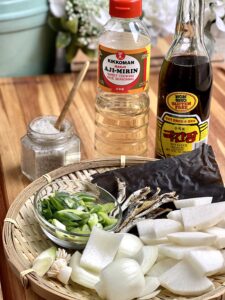
- If you're using fish cake sheets, soak in hot water for a couple minutes. This is to soften them so that they are flexible, and also to wash off some of the oil that on them from being previously fried.
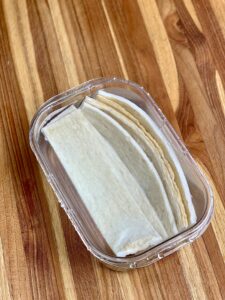
- Skewer the fish cake sheets (I am using both sheets and pre packaged fish cake skewers). You can either cut the fish cakes in half long ways, or fold them in half and skewer them whole.
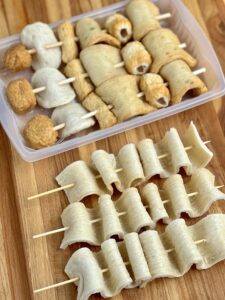
Broth:
- In a pot add water, dried acnchovies, dried kelp, onions, radish, and the white ends of the green onions. Bring to a boil then simmer uncovered for 20 minutes.
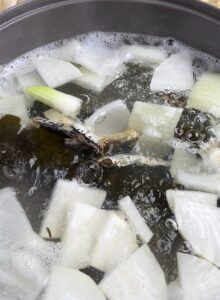
- After 20 minutes, remove the anchovies and kelp.
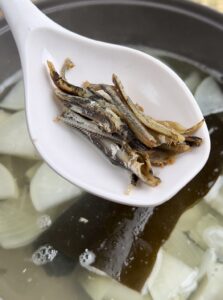
- Cover on med-low heat for 20 minutes.
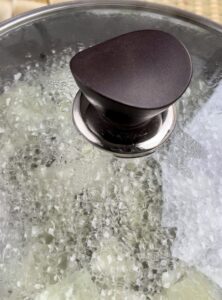
- Remove the onions and radish and set them aside. Strain the broth then add the radish back in, then season the broth with soup soy sauce, sea salt, and rice wine.
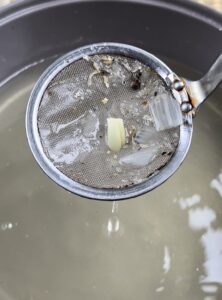
- Add the fishcake skewers and let it cook for 10 minutes, ladling the broth over the top pieces occasionally. (Don't worry if you skewers aren't fully submerged the whole time- the steam will help to heat it through).
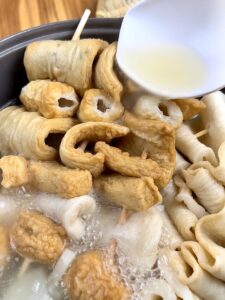
- Top with chopped green onions
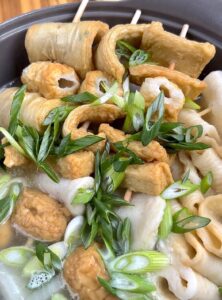
- Remove from heat and enjoy with dipping sauce. Pour the broth into a cup to sip on while eating the fishcakes.
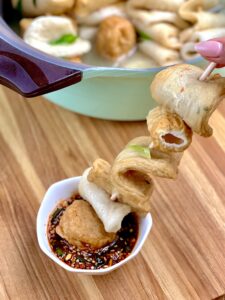
Nutrition information is automatically calculated, so should only be used as an approximation.
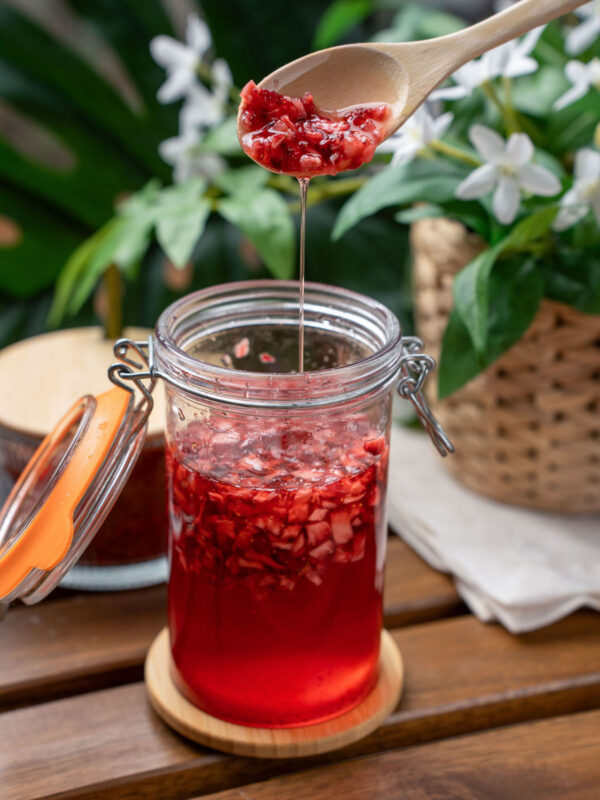
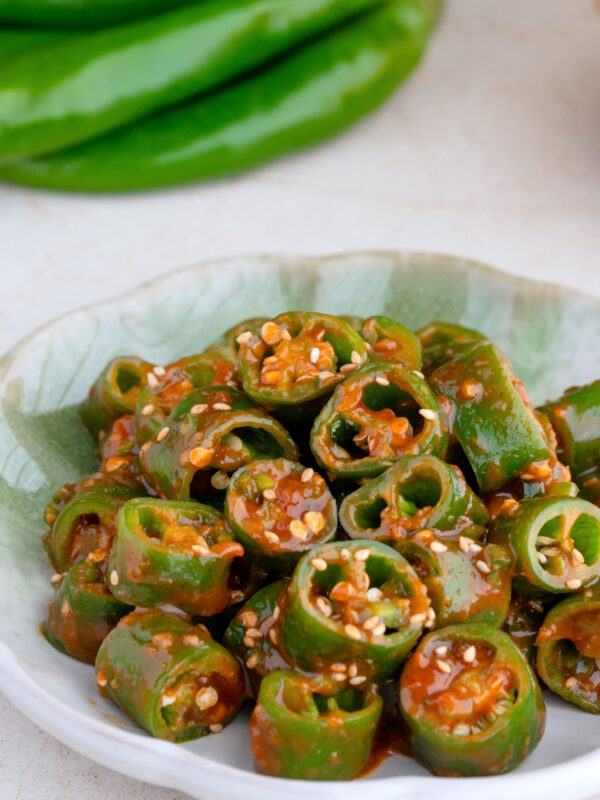
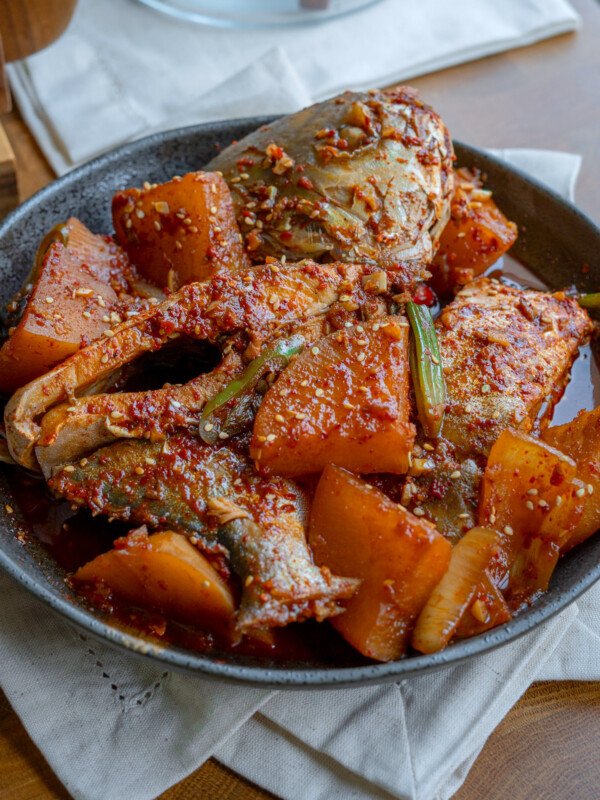
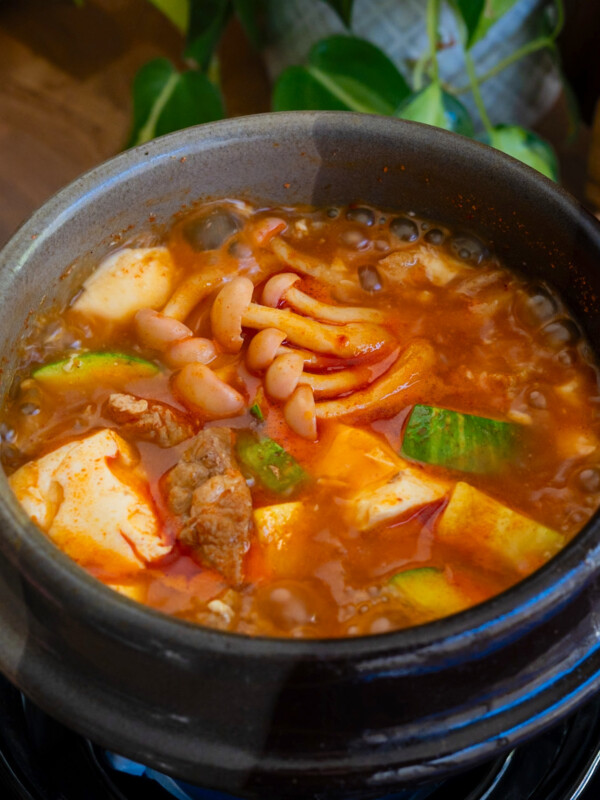







I love fish cake soup and love your recipe for this! So easy to follow and easy to make. I especially love the addition of your dipping sauce! Such a comforting warm simple meal!
Thanks For Sharing this Amazing Recipe. My Family Loved It. I will be sharing this Recipe with my Friends. Hope They will like it.